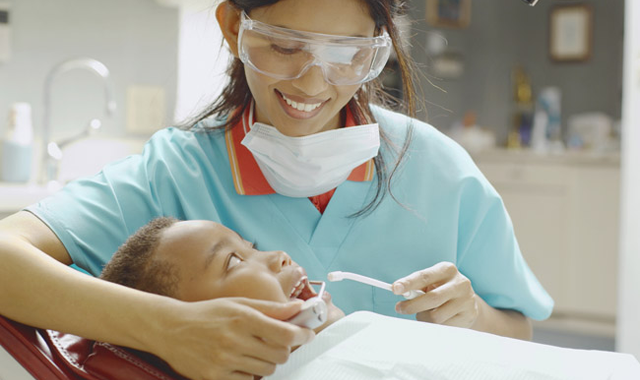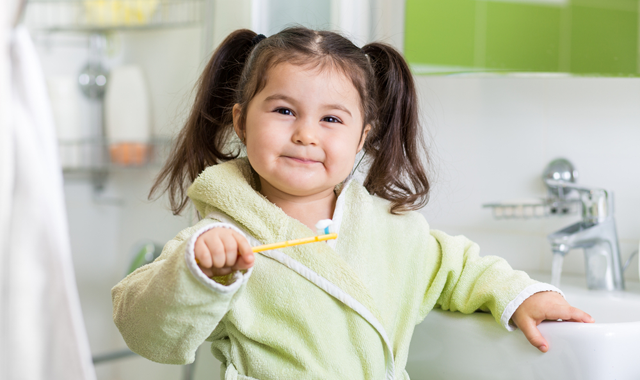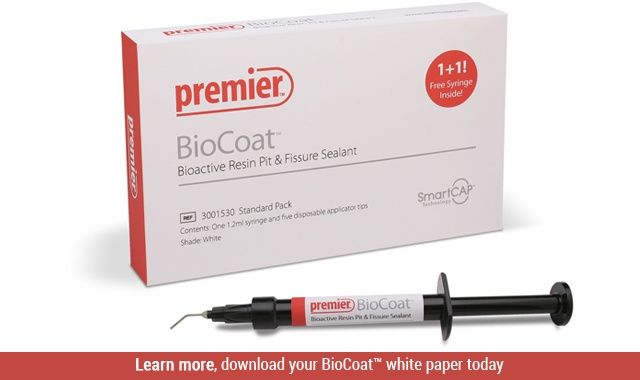What parents NEED to know about keeping their children’s teeth healthy
Having a healthy smile is crucial to a child’s overall health and development.
Your child’s teeth matter, including baby teeth. Even though baby teeth are replaced by adult teeth, they still play an important role in your child’s development.

Baby teeth impact the development of facial muscles and jaw development, and are also responsible for proper speech development. They are crucial for children getting proper nutrition because chewing food-and the ability to chew properly-aids in digestion. Kids need nutrients to grow and the ability to chew food properly increases the surface area of food during digestion, which in turn allows for better absorption of nutrients to your child’s growing body. Having healthy, sound teeth also contributes to aesthetics and a child’s self-esteem. Some baby teeth are not shed until the ages of 10, 11 and 12, so maintaining the health of these baby teeth is crucial.
More from the author: Why prevention is key when it comes to oral health
But how do you keep your child’s teeth healthy? Click through the slides to learn five ways.


Make the first dental visit no later than age 1
Regular dental visits as a child sets them up for being a healthy adult. Many bodily diseases have been linked to inflammation and bacteria from the mouth. Just a few of the links between gum disease and overall health include risk of cardiovascular disease, stroke, certain cancers, diabetes, and this list goes on. By keeping your child’s teeth healthy, you start them on a lifelong road toward health.
Trending research: Study finds that certain type of children respond better to laughing gas
Children should visit the dentist when the first tooth erupts (on average around 6 months) or no later than their first birthday. Even if the visit is a “happy visit” and only a visual examination can be tolerated by the child, it’s important to get them familiar with the dental office. Hearing the sounds, seeing the equipment and meeting the dental staff are all important in allowing a child to become comfortable with going to the dentist. These early visits are also important for the parents, education-wise, on caring for their child’s teeth.



Don’t swap spit with your child
Dental decay (cavities) is caused by bacteria. Certain bacteria are responsible for causing decay in teeth. Children are not born with this bacteria; the majority of this bacteria is passed from parents and/or caregivers to children. This passing of bacteria happens when a child is exposed to saliva of a parent or caregiver. This can happen through the sharing of food, kissing on the lips, cooling down food by blowing on it, sharing a toothbrush, or when parents clean off a pacifier with their own mouth instead of water. Some of these things are easier to avoid than others; however, for the health of your child’s teeth, trying to avoid these things can really help in the fight against tooth decay. Of course this is easier said than done, but being educated on the transmission of this bacteria is key.
Related reading: Does oral rinse REALLY matter?
Having a healthy mouth as a parent is also important due to any exposure of saliva to your child. Are you keeping regular dental appointments? Do you brush twice per day and clean in between your teeth? Is your mouth infection-free? Being open and sharing within your family is great, but not when it comes to sharing bacteria!


ADVERTISEMENT



Don’t let a child fall asleep with a bottle containing anything other than water
Baby bottle tooth decay, or tooth decay caused by the contents from drinking a bottle, is preventable. The bacteria that causes tooth decay feeds off the sugar that is ingested by the child. This bacteria then excretes acids, which decay teeth. Limiting this exposure to sugar is crucial. Juice, milk, formula, sports drinks and soda all contain sugar that can cause tooth decay. When adults and children sleep, saliva flow is decreased so it cannot help wash away this sugar. It sits on teeth, feeding the bacteria, which excrete acid as byproducts that can cause teeth to decay. Yes, bacteria poop acid that causes cavities! Prolonged exposure to sugar at any time of day can be detrimental to teeth, but especially before sleep. This is why it’s best to only give a child water in their bottle before a nap or bedtime.
Trending research: Is staying hydrated destroying children's teeth?
On the subject of juice, the American Academy of Pediatrics (AAP) recently updated its recommendations on juice consumption for children2. The AAP states, “It is optimal to completely avoid the use of juice in infants before one year of age. When juice is medically indicated for an infant older than 6 months, it is prudent to give the juice to the infant in a cup. Dental caries have also been associated with juice consumption. Prolonged exposure of the teeth to the sugars in juice is a major contributing factor to dental caries (cavities/dental decay). Recommendations from the AAP and American Academy of Pediatric Dentistry state that juice should be offered to toddlers in a cup, not a bottle, and that infants not be put to bed with a bottle in their mouth. The practice of allowing children to carry a bottle, easily transportable covered cup, open cup or box of juice around throughout the day leads to excessive exposure of the teeth to carbohydrates, which promote the development of dental caries.”2
Beyond the effects to dental health and juice consumption, malnutrition and short stature in children has been associated with excessive juice consumption in kids2. In summary, the AAP recommends, “Juice should not be introduced into the diet of infants before 12 months of age unless clinically indicated. The intake of juice should be limited to, at most, 4 ounces/day in toddlers 1 to 3 years of age, and 4 to 6 ounces per day for children 4 to 6 years of age. For children 7 to 18 years of age, juice intake should be limited to 8 ounces or 1 cup of the recommended 2 to 2.5 cups of fruit servings per day.”2



Oral hygiene habits practiced every day is the first line of defense in maintaining health
Before a baby has his or her first tooth, it’s recommended to wipe around the mouth with a soft, wet cloth. Brushing teeth with a small, soft-bristled toothbrush should begin when the first tooth is visible in a child’s mouth. Use a rice grain sized amount of fluoridated toothpaste twice per day until a child is 3 years old. From the ages of 3 to 6, a pea-sized amount of fluoridated toothpaste is recommended. Brushing a child’s teeth for a full two minutes twice per day is key, with brushing at night being the most important. Cleaning in between the teeth, with floss or another interdental aid, should begin when the teeth begin fitting close together, normally between the ages of 2 and 6. Supervising and helping a child brush until about the age of 7 and encouraging them to spit out the excess toothpaste is a must. A good rule of thumb is a child needs help brushing their teeth until they can tie their own shoes. Depending on a child’s dexterity, the ability to floss on their own is around age 10.
More from the author: What you need to know about gum disease
Routine and setting an example of oral health care habits is especially important in building good habits in children. Make sure you are brushing twice per day for a full 2 minutes and cleaning in between your teeth once per day, to set an example for your kids. Explaining why brushing and flossing teeth to a child helps encourage good habits as well. A dental hygienist can help with educating both you and your child and show your child how to properly brush and clean in between their teeth. So don’t discount the value of dental visits; it’s more than just “a teeth cleaning!” Education for both you and your kids is crucial!



Prevention is the best medicine
It is estimated that more than 51 million school hours are lost each year due to dental-related illness.1 Kids with dental pain can be withdrawn, unable to concentrate and irritable. Combined with missing school days, this can affect school performance1. Children who reported tooth pain were almost four times more likely to have a low grade point average, falling below the median GPA of 2.8, when compared to children without tooth pain3. Not to mention the fact that if a child is absent from school, a parent might need to stay home from work as well. One study showed that 58 to 80 school hours were missed due to dental pain for some kids. In turn, parents missed 2.5 days of work per school year because of their child’s dental problems3. Oftentimes, tooth pain is due to dental decay or cavities. Dental decay tends to only hurt once it’s severe and has reached the center of the tooth, where the nerves reside.
Trending article: The top 8 worst types of patients in the waiting room
Preventive measures, education on oral health and access to dental care are all issues here. Let’s talk preventive measures: sealants! Sealants are a thin coating of material placed on the chewing surfaces of premolars or molars that have deep grooves. Sometimes these grooves are too deep for a toothbrush to effectively remove bacteria, even with the best brushing habits. Sealants are a preventive measure that don’t require a shot to get numb or removal of tooth structure; they simply protect the tooth surface from bacteria and decrease the risk of dental decay. They are also painless. Sealants are great because they are a “preventive” measure, not a “fix it after there’s a problem” measure. They are not only effective in prevention of dental decay, but cost-effective, too. Sealants are about 1/3 the cost of filling a cavity in a decayed tooth. Prevention is better for your child’s oral and overall health and better for a parent’s pocketbook. Win-win!
Everyone wants his or her child to be healthy, and having a healthy smile is crucial to a child’s overall health and development. Don’t discount the importance of a healthy mouth as it leads to a healthy body!
References
1. Council on Clinical Affairs. American Academy of Pediatric Dentistry. Policy on School Absences for Dental Appointments. (2015). V38: No. 6. Retrieved from http://www.aapd.org/media/Policies_Guidelines/P_SchoolAbsences1.pdf
2. Heyman, M.B., Abrams, S.A, Section on Gastroenterology, Hepatology, and Nutrition, Committee on Nutrition. Pediatrics (2017, May). e20170967; DOI: 10.1542/peds.2017-0967. Retrieved from http://pediatrics.aappublications.org/content/early/2017/05/18/peds.2017-0967
3. Seirawan, H., Faust, S., & Mulligan, R. (2012). The Impact of Oral Health on the Academic Performance of Disadvantaged Children. American Journal of Public Health, 102(9), 1729–1734. http://doi.org/10.2105/AJPH.2011.300478 Retrieved from https://www.ncbi.nlm.nih.gov/pmc/articles/PMC3482021/

